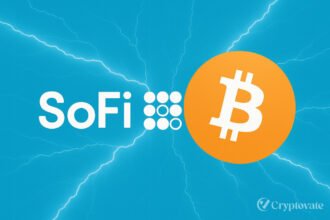– Ad –
| Getting your Trinity Audio player ready... |
Vitalik emphasizes that the L2 shift to ZK proofs should be a top priority to ensure faster and more secure withdrawals from Ethereum’s scaling ecosystem. Rather than chasing full decentralization of L2s (known as Stage 2), he emphasizes that speeding up exit times should take precedence to improve user experience and liquidity.
Why Optimistic Rollups No Longer Cut It
Currently, many Layer 2 solutions rely on optimistic rollups that require a challenge window—often up to a week—before enabling withdrawals. This delay is costly for liquidity providers and forces users toward third-party bridges, undermining Ethereum’s decentralized design.
L2 Shift to ZK Proofs: A Move Toward Faster Withdrawals
Vitalik argues that faster withdrawals Ethereum should leverage zero-knowledge (ZK) proofs, which eliminate the need for prolonged challenge periods. In the short term, he expects withdrawal times could shrink to under one hour, with a long-term target of just 12 seconds. ZK systems offer cryptographic validation at submission, significantly cutting withdrawal friction.
A Hybrid Proof System for Security & Performance
To balance maturity, speed, and security, Vitalik proposes a hybrid proof system. This model combines ZK, optimistic (OP), and trusted execution environment (TEE) proofs in a 2-of-3 format. Such a structure aims to bring enterprise-level Ethereum scalability roadmap benefits without compromising trust.
Also Read: Zero-Knowledge Proofs: The Future of Blockchain Privacy
What It Means for Ethereum’s Future
This call for an L2 shift to ZK proofs is more than a technical upgrade—it’s a strategic pivot toward usability. Faster withdrawals reduce capital lock-up and reinforce Ethereum’s dominance as the economic center of decentralized finance. If realized, this shift could reshape liquidity patterns and developer focus across Rollup ecosystems.
FAQs
Why does Vitalik think withdrawals must be faster?
He believes that reducing withdrawal time from days to minutes or seconds enhances liquidity and aligns with Ethereum’s decentralization goals.
What makes ZK proofs better than optimistic systems?
ZK proofs validate transactions instantly, removing long challenge windows, while still securing the network cryptographically.
How does the hybrid proof system work?
It requires agreement from any two of three methods—ZK, OP, or TEE—offering a flexible pathway toward secure, fast withdrawals.

















